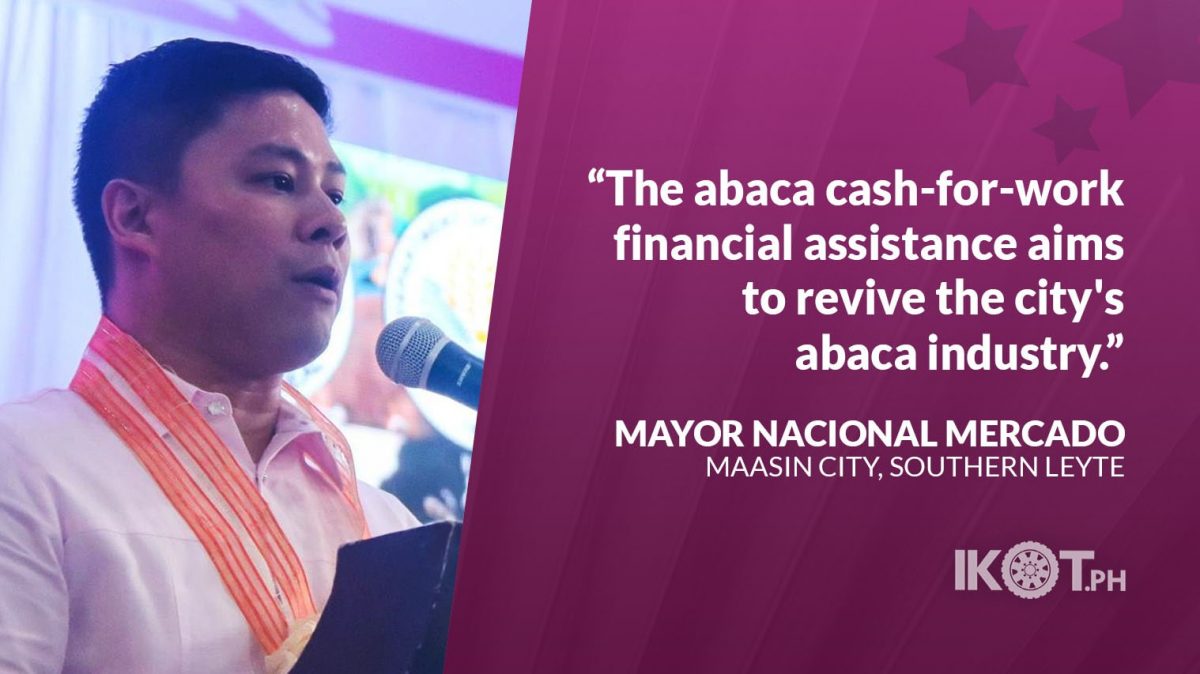The Maasin city government in Southern Leyte has started the distribution of cash assistance to abaca farmers taking part in the local abaca rehabilitation program.
Maasin City Mayor Nacional Mercado said the abaca cash-for-work financial assistance aims to revive the city’s abaca industry.
Each abaca farmer is entitled to P6,000 cash assistance.
At least 350 abaca farmers are among the first batch of cash aid recipients. They are from the villages of Pinaskuhan, Nonok Norte, Sta. Cruz, and Sto. Niño.
“The cash to be given will serve as labor assistance for the cleaning/clearing, weeding, and other cultural management practices in raising the abaca plant.”
“The cash to be given will serve as labor assistance for the cleaning/clearing, weeding, and other cultural management practices in raising the abaca plant,” Mercado explained.
Twenty of the 70 villages in Maasin are abaca producers selling dried fiber to a processing plant in Baybay City.
“The city government has already allocated funds for the next batch of abaca farmer-beneficiaries.”
The mayor assured the city government has already allocated funds for the next batch of abaca farmer-beneficiaries.
In 2019, the villages of Lonoy, Cabadiangan, and Pinaskuhan have established their own abaca nurseries to revive the industry affected for decades by abaca diseases.
Villages with established abaca nurseries get organic and complete fertilizers from the provincial government to increase the chance of survival of abaca seedlings.
Abaca production of the city declined for several years after the bunchy top virus affected the plants.
Bunchy top disease (BTD) is considered the most destructive disease of abaca where infected crops exhibit ‘bunched top’ appearance, stunting, and yellowing of the leaves, poor fiber quality, and significant fiber yield loss.
Other abaca-producing towns in Southern Leyte province are also affected by the virus prompting the provincial government to host the first National Abaca Summit in 2015 where stakeholders discussed ways on how to revive the ailing abaca industry.
Although some villages in the city had started to get back on producing abaca fibers, agriculture officials in the province had cautioned farmers to be vigilant and adhere to disease management to prevent the bunchy top problem from affecting their livelihood again.

